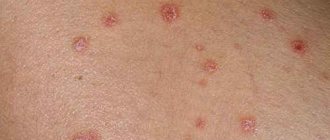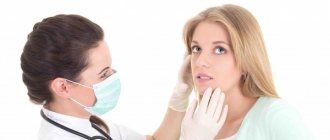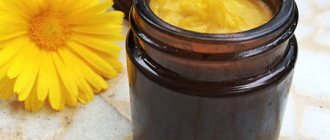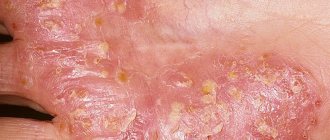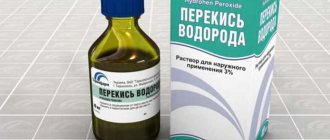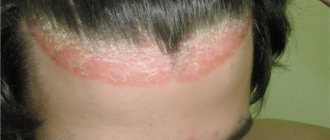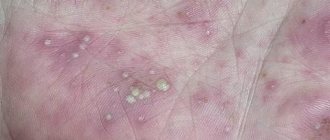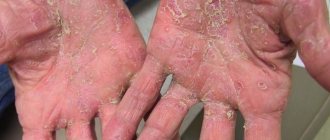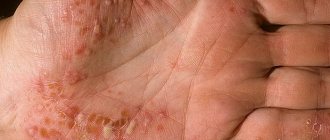Psoriasis occupies one of the first places among dermatological diseases, accompanied by the formation of psoriatic plaques on any part of the body. The severity of the disease is determined by its symptoms and clinical form.
It is impossible to completely cure psoriasis, since its etiology and pathogenesis are not fully understood. However, it is possible to reduce the activity of psoriatic manifestations and achieve long-term remission with the help of complex treatment, which, in addition to medications, physiotherapy and the use of traditional recipes, includes ultraviolet treatment of psoriasis.
Positive effects of UV therapy
Every person knows that the natural source of ultraviolet rays is the sun, so in most cases, patients with psoriasis are recommended to rest in a dry and hot climate. However, the sun is active for several months a year, which is very short for the treatment of psoriasis. In this case, it is recommended to use phototherapy, in which artificial ultraviolet rays of a certain length destroy skin cells affected by psoriasis, neutralizing the inflammation process.
When treating the disease, short-acting ultraviolet rays are used in combination with drugs (keratolytics) that promote effective exfoliation of dead skin cells from the affected areas of the skin. STATIC DATA SAYS THAT IN 70% OF CASES, PATIENTS FEEL SIGNIFICANT IMPROVEMENT AFTER THE COMPLETE COURSE OF TREATMENT.
This method of treating psoriasis is most effective for patients with a complicated course of the disease involving large areas of skin. However, it should be borne in mind that the procedure must be carried out in compliance with all safety standards and norms of recommended exposure to ultraviolet radiation, since if these rules are violated, there is a high risk of developing cancer.
How to cure psoriatic onychodystrophy?
Psoriasis is a chronic, non-contagious disease that affects the skin. However, psoriasis of the fingernails or toenails is also common.
Therefore, the question of how to cure scaly nail lichen is relevant for many patients.
Sometimes manifestations of nail psoriasis are the first symptoms of the development of a general skin lesion.
Reasons for development
The nature of nail psoriasis is autoimmune. That is, the reasons that cause nail damage in psoriasis are malfunctions of the immune system. The production of specific antibodies causes damage to the skin.
Often, scaly lichen with damage to the nail occurs in blood relatives. Genetic causes are one of the main factors in the development of the disease.
Provoking reasons due to which psoriatic onychodystrophy may develop or worsen:
- prolonged or severe stress;
- chronic or untreated infections;
- repeated nail injuries.
Sometimes psoriasis develops while taking certain medications. The following medications can trigger nail psoriasis:
- beta blockers;
- preparations containing lithium;
- hormonal agents;
- non-steroidal drugs that have an anti-inflammatory effect.
Risk groups for developing nail psoriasis include:
- young guys under 20 years old;
- older people, regardless of gender.
Signs and symptoms
Symptoms can be very diverse depending on the type and form of the disease. The most common symptoms of psoriasis under the nails are:
- the presence of grooves and pinpoint depressions on the nail plate;
- the formation of an inflamed border around the affected nails, involving the skin of the fingers and toes in the process;
- the appearance of white, brown or gray spots on the nail plate;
- formation of psoriatic plaques. With psoriasis, yellow spots that look like drops of oil form on the surface of the nail;
- dryness of the nails themselves and the skin that surrounds them;
- sharp thickening of the nail plate;
- With nail psoriasis, crumbling and brittleness of the nail plate is observed.
Nail psoriasis is often accompanied by associated fungal or bacterial infections. At the same time, psoriasis of the fingernails is observed somewhat less frequently than lesions of the nail plate on the toes.
There are several forms of psoriasis under the nails:
- Thimble-shaped. This is the classic and most common type of nail plate lesion. It manifests itself by the appearance of depressions in the form of dots on the surface of the nails.
- Onycholysis. This form is characterized by detachment of the plate from the bed without the development of inflammation. Onycholysis can be complete or partial.
- Onychomadesis. It has similar symptoms to onycholysis, but all processes occur much faster. It is considered one of the most difficult types of nail psoriasis to treat.
- Subungual hemorrhages. A form of nail psoriasis in which hemorrhages form in the subungual space.
- Trachyonychia. This type of disease is characterized by thickening of the nails, while the surface of the affected plates becomes uneven and rough.
- Paronychia psoriatic. This form occurs in generalized psoriasis. The skin around the nails becomes very thick and inflamed, and the inflammatory process can spread to the entire finger.
In the development of psoriasis under the nails, several stages can be distinguished:
- Initial. At this stage, clouding of the plate and the appearance of small transverse and longitudinal grooves on it, resembling a mesh, are observed.
- Second stage. By this time, the thickening of the plate, a change in its color and consistency, becomes noticeable. In the hemorrhagic form of nail psoriasis, streaks of blood become visible under the plate. Pus may ooze from under the nail fold.
- Third stage. This stage is characterized by peeling of the plate from the bed. Associated infections are often observed. This is an advanced version of nail psoriasis, which shows symptoms of atrophy. Psoriatic plaques resembling oil stains appear on the surface of the plates.
Treatment
Before treating nail psoriasis, you need to undergo an examination to clarify the diagnosis. Since fungal infections often produce symptoms similar to those of nail psoriasis.
You should immediately be prepared for the fact that the treatment of nail psoriasis will be lengthy; the process may take several years.
Proper treatment can achieve stable and long-term remission, however, it is impossible to completely cure psoriasis.
Competent treatment must be carried out in a complex manner. The following activities must be carried out:
- sanitize foci of infection;
- normalize hormonal status;
- achieve restoration of gastrointestinal functions;
- control the emotional background, since stress often provokes an exacerbation of psoriasis under the nails.
Nail psoriasis is treated using local and systemic agents and physiotherapy methods. Additionally, you can treat nail psoriasis with folk remedies. Comprehensive treatment of nail psoriasis includes diet and specific hygiene care.
Drug therapy
Drug treatment of nail psoriasis involves the use of drugs based on glucocorticosteroids. These are hormonal drugs, so only a doctor should select them, prescribe doses and duration of use.
Additionally, for psoriasis under the nails, the following remedies may be prescribed:
- preparations containing calcium. These remedies have a general strengthening effect;
- antihistamines, if patients with psoriasis complain of severe itching;
- vitamins and mineral supplements, since nail psoriasis is often accompanied by vitamin deficiency and diselementosis.
Vitamins of groups A, C, P, D, E and B are especially useful for psoriasis under the nails. Among the microelements for psoriasis, the use of selenium, silicon, calcium, and zinc is indicated. All these substances promote tissue regeneration and allow you to quickly restore the appearance of nails with psoriasis.
Local treatment
Complex therapy includes the use of local remedies. First of all, these are ointments containing glucocortisteroids. In the initial stages, the use of hydrocortisone or prednisolone ointment is prescribed. In advanced cases of psoriasis, it is necessary to prescribe hormonal ointments of the latest generation. These are non-halogenated preparations, that is, they do not contain fluorine and chlorine. The use of such ointments for nail psoriasis reduces the risk of adverse reactions.
A relatively new topical remedy that can be used to treat psoriasis is Psorcutan cream. This product contains a synthetic analogue of vitamin D. The positive quality of this product is that it allows you to control the formation of psoriasis under the nails. The fact is that with psoriasis, the normal process of cell maturation is disrupted, and the use of Psorkutan cream allows the process of cell maturation to be completed. In addition, this remedy has virtually no side effects, so it can be used at home for a long time.
To stop inflammatory processes and relieve peeling, it is recommended to use salicylic or tar ointment.
Physiotherapy
Physiotherapeutic procedures are included in the treatment of psoriasis under the nails. Ultraviolet light has a positive effect.
For nail psoriasis, sessions of ultraviolet irradiation or PUVA therapy may be prescribed. In the latter case, irradiation with ultraviolet rays is combined with the use of drugs that increase the sensitivity of tissues to light. Used in a complex of procedures and laser therapy. The effect of physiotherapy is to inhibit excessive cell division.
Folk remedies
Additionally, this serious disease can be treated at home with time-tested folk remedies.
To lubricate nails with psoriasis, it is easy to prepare a healing ointment at home. To do this you need to take the following things:
- technical grease – 10 parts;
- baby cream – 1 part;
- rendered pork fat - 10 parts.
Heat all ingredients until softened and mix. Apply to sore areas every evening and leave the ointment overnight.
You can use other folk remedies. Warm local baths are useful for psoriasis under the nails.
At home, you can prepare baths from corn starch or oatmeal. Semi-liquid jelly is prepared from these products and, after cooling slightly, the fingertips are immersed in the prepared jelly.
Baths made from a decoction of bay leaves are useful. A glass of water requires 10 grams of dry leaves. Boil the ingredients for 10 minutes, then let the composition cool to a pleasant temperature and take 15-minute baths. To enhance the effect, the same decoction can be taken orally, 40 ml (a fifth of a glass) three times a day. Instead of bay leaves, you can use oak bark, celandine grass or string.
Additional recommendations
For the fight against a disease to be successful, it is important not only to treat the effect, but also to eliminate the cause. Therefore, if chronic diseases were identified during the examination, then it will be necessary to undergo courses of corrective therapy.
It is known that deterioration of the condition of nails in psoriasis is often observed under stress and emotional overload. Therefore, it is important to remain calm and have a positive outlook on life.
Hygienic care
It is important for patients to follow the rules of hygienic care. Therefore, you must adhere to the following rules:
- if you have psoriasis under the nails, you will have to give up a chic manicure, the plates will need to be cut as short as possible;
- when performing manicure and pedicure, it is important to prevent damage to the plates by instruments;
- since the plates themselves and the skin around them suffer from dryness, it is necessary to use moisturizers daily;
- for nail psoriasis, it is useful to rub an oil solution of vitamin A into the plates daily;
- It is recommended that all household chores involving the use of household chemicals and water be carried out exclusively with gloves.
Diet
A properly formulated diet will help in the fight against psoriasis under the nails. The diet for this disease is similar to nutritional recommendations for patients with gastritis. Here are the main points:
- The daily diet must maintain the ratio of alkaline and acidic foods. The first should be 70%, the second – 30%;
- alcohol, smoking, fried and fatty foods are excluded;
- you will have to give up allergenic foods - chocolate, nuts, citrus fruits;
- fatty dairy products should be replaced with low-fat ones, with preference given to fermented milk products;
- you need to significantly reduce the consumption of vegetables from the nightshade family - potatoes, tomatoes, eggplants.
What you can and should eat:
- all cereals cooked in water;
- vegetables;
- fish and lean meat;
- eggs;
- fruits.
Possible consequences
Psoriasis belongs to the category of diseases that cannot yet be cured. Even after a long remission, the development of relapses cannot be ruled out.
The disease does not pose any threat to people around the sick person, because it is not contagious. But for the patient himself, psoriasis of the skin and nails can become a risk factor for the development of nervous and cardiovascular diseases. Neuroses, alcoholism, depression are conditions that often develop in patients. In the case of severe psoriasis of the skin and nails, the patient experiences severe psychological discomfort. And constant stress can provoke the development of heart attack, oncology, diabetes and other serious diseases.
With psoriasis under the nails, the plates can completely atrophy, which will create difficulties for the patient in communicating with other people. Therefore, timely diagnosis and proper treatment of this disease is so important. Although psoriasis of the skin and nails cannot be completely cured, long-term remission can be achieved. The earlier treatment is started, the easier it is to achieve success.
Contraindications to UV treatment
Before starting therapeutic UV treatment, it is recommended to conduct a number of diagnostic examinations for possible contraindications, which most often include:
- disease with systemic lupus erythematosus;
- the presence of porphyria (genetic diseases with a high content of natural pigments produced by porphins);
- Gorlin syndrome (pathological process of autosomal dominant genetic type);
- manifestations of dermatomyositis;
- increased sensitivity to ultraviolet radiation;
- malignant neoplasms and some benign tumors with a probability of degeneration into cancer;
- Treatment with psoralens and UV rays is prohibited during pregnancy and lactation;
- Exposure to ultraviolet rays is not recommended for patients with dysfunctional liver and kidney disorders.
In addition, taking medications with arsenic, as well as some ophthalmological diseases (cataracts, damage to the lens of the eye), are contraindications.
Mechanisms of lamp action
So, what are the mechanisms of action of ultraviolet lamp (UV) in the treatment of psoriasis?
- Nervous-reflex. Ultraviolet irritates receptors on the skin, sending impulses to the central nervous system, and then to other organs in the body.
- Physico-chemical. The energy generated by the device is converted into heat, which can positively influence the metabolic rate in the body, which leads to better nutrition of cellular structures, and therefore restoration of damaged epithelium.
- Photoelectric. Ultraviolet light can increase the permeability of membranes between cells.
- Pigmentation. The rays of the lamp cause the skin to produce a protective dark pigment, which affects the body's ability to reflect the negative effects of the environment.
Classification of UV therapy
As a rule, the radiation procedure is carried out in a medical facility, under the supervision of a doctor. Ultraviolet light can be used as a primary or adjunctive treatment for psoriasis.
The principle of positive effects is explained by irradiation of a specific area of skin with psoriatic rashes, which causes minimal harm to the patient and does not disturb the general condition of the body. As a result of this treatment, a bactericidal effect occurs, metabolic processes are normalized and acute inflammation is relieved.
Ultraviolet rays have different ranges (combined, broadband, narrowband). The intensity of irradiation is selected according to the severity of symptoms.
NARROW BAND THERAPY. This treatment method is effective for lesions in a small area. Narrowband therapy uses spectral waves (B) with a length of at least 331 nanometers. The lowest radiation dose is 0.1 J/sq. see. The course of treatment is 3 times a week.
BROADBAND THERAPY. In this case, the treatment is carried out with waves whose length is 350 nanometers with a minimum radiation dose for the first session of 0.1 J/cm. with a gradual increase. Before the session begins, a keratolytic agent must be applied to psoriatic plaques to better remove the keratinized layers of the epidermis. The course of treatment is 30 sessions. As a result of the effects of broadband therapy, the process of division of pathogenic cells slows down.
COMBINED THERAPY. The combined technique of patient irradiation involves a combination of a UV lamp with medium (B) and long (A) waves. Combination therapy is used in a hospital setting for the treatment of extensive psoriatic lesions of the epidermis. This therapy must be combined with external preparations (creams, ointments, gels) to moisturize the skin and mitigate the effects of increased ultraviolet doses.
Ultraviolet therapy methods for psoriasis
Irradiators used to improve the patient's condition operate at a specific wavelength of light. Exposure to safe rays on the skin surface allows you to clear it of plaques, get rid of bacteria and inflammation while stimulating skin cells to produce melanin. Ultraviolet treatment of psoriasis manifestations is performed using one of three methods.
Principles of photochemotherapy (PUVA)
The method is based on the use of an ultraviolet lamp with a wavelength in the range of 320-365 nanometers (nm). Ultraviolet irradiation of psoriatic rashes is enhanced by treating them with photosensitizing drugs (psoralens). The active form of the medication dissolves the stratum corneum, making it easier for the ultraviolet radiation of the irradiator to reach the site of pathological processes. The choice of type of PUVA therapy depends on the method of application of the photosensitizer:
- The systemic type of treatment for psoriasis involves oral administration of psoralen before the start of the UV treatment procedure;
- Before carrying out local therapy with an irradiator, external treatment of the affected area with a photosensitizing emulsion is performed;
- For extensive manifestations of psoriasis, PUVA baths with psoralen are used to treat the disease before irradiation.
The chemical composition of psoralens, as amplifiers of the therapeutic effect of a UV lamp, does not harm the skin. The action of the keratolytic drug is activated only under ultraviolet rays. The procedures are carried out in clinics equipped with stationary irradiators.
Benefits of Narrow Band Therapy
Treatment of psoriasis with light from an ultraviolet lamp, generating narrow-wave radiation with a wavelength in the range of 310-311 nm, is considered by experts to be the most effective technique. The procedure is safe for patients with dermatitis of any age and with any skin tone. A short session of precise exposure to ultraviolet light on the site of the rash can be done in a medical facility. If you purchase an irradiator, psoriasis can be treated at home. You should consult your doctor about choosing the type of ultraviolet lamp, as well as the intensity of UV radiation.
Broadband phototherapy
The wavelength range of the UV irradiator for broadband therapy of dermatitis is 295-340 nm. Exposure to light in this spectrum can cause damage to the skin. To protect against burns, before a session of treatment of psoriasis lesions, the skin is treated with a keratolytic agent.
What happens under the influence of ultraviolet radiation:
- The uncontrolled division of pathologically affected cells slows down;
- Plaques soften and then disappear;
- The skin is cleansed of particles that have become rough during illness.
Advice. Ultraviolet irradiators are available in different sizes with unequal power of UV lamps. The procedure for treating pinpoint skin lesions is performed with devices whose working panel consists of several low-power lamps. For home therapy, it is better to choose a portable irradiator.
Devices for home treatments for psoriasis
The positive effect of sunlight on human skin has been known for a long time, but only with the discovery of electricity did scientists manage to obtain radiation of a given spectrum. The production of lamps with an optimal wavelength for treating skin has made it possible to treat psoriasis symptoms with ultraviolet light. UV lamps generating a wavelength of 311 nm can be used during pregnancy. The relative affordability of the price makes it possible to use irradiators for the treatment of dermatitis even at home.
Model Ultramig
The UV lamp is designed to treat large areas of the skin surface affected by symptoms of psoriasis with narrow-band waves. It is easy to use a portable stationary irradiator at home if certain conditions are met:
- To install the ultraviolet treatment lamp, choose a horizontal surface;
- Before a phototherapy session, clean the affected area of the skin from traces of psoriasis;
- The patient is located in the area of action of the irradiator, exposing the affected area to the rays.
The device, manufactured by Chronos (St. Petersburg), is equipped with safety glasses. They should definitely be worn before ultraviolet irradiation, having previously agreed with the dermatologist on the duration of the procedure.
Dermalight irradiator
Unlike the Ultramig, the Philips ultraviolet spectrum lamp will have to be held in your hands. The compact device makes it convenient to treat areas affected by psoriasis while doing treatment at home. The safety of irradiation is determined by the effect of ultraviolet radiation only on the epidermis of the selected area, if the psoriatic plaques are small in diameter.
Psoriasis Ufik device
An irradiator for carrying out a UV irradiation procedure can be called the simplest and most affordable option for local therapy of psoriasis. The domestically produced device, which allows convenient treatment at home, operates in a narrow-band range. The manual method of irradiation with an ultraviolet apparatus is used for various parts of the body affected by plaques. The light of the lamp helps to activate local immunity and suppress inflammation.
For a stable radiation intensity, it is better to turn on the device in advance. There are also restrictions on exposure to different areas. The maximum duration of UV irradiation for one area of rash on the body is 3 minutes, on the scalp – 15 minutes.
It is recommended to begin treatment of psoriasis with ultraviolet irradiation only after consultation with a doctor and a medical examination. The UFO procedure is not without contraindications, including pulmonary tuberculosis, oncology, symptoms of hyperthyroidism and smallpox, and some types of bleeding. UV lamps, which have become popular, slow down the growth of scales on areas of the affected skin surface without the development of erythema and burns. But ultraviolet light is only an addition to the main method of treating psoriasis.
Video material:
Algorithm of action for the treatment of psoriasis with UV rays
In order to perform treatment with maximum effect and minimal side effects, you must follow the procedure:
- Before ultraviolet irradiation, you should prepare the affected areas of the skin by removing makeup and dirt. In addition, it is recommended to remove scales from psoriatic plaques that are loose.
- Photosensitizing drugs should not be used simultaneously with UV therapy, as this can cause severe burns. In addition, the simultaneous use of salicylic acid, which significantly reduces the effectiveness of ultraviolet rays, is excluded.
- The UV lamp should be located at a distance from the skin of at least 2 cm and no more than 4 cm. Before performing the procedure, the lamp must be turned on for 30 seconds to warm up (if there are no other indications in the annotation). When moving the lamp to different affected areas, it is necessary to take into account the already irradiated areas so as not to repeat the procedure, which will cause a burn.
- The duration of the first treatment session is no more than 40 seconds. (limbs) and 20 sec. (for the whole body). The interval between irradiation of one area should be at least 72 hours. The maximum irradiation of the affected area (1 session) should be no more than 3 minutes. In this case, it is recommended to pre-lubricate unaffected skin areas with sunscreen or cover with a thick, light-colored cloth.
- Positive results are observed after 15-20 procedures. In some cases, there is a complete disappearance of negative symptoms and cleansing of the skin, however, there is a small percentage of patients who are immune to ultraviolet radiation.
After each procedure, the doctor examines the skin, monitoring the reaction to ultraviolet light. In the absence of side effects, the procedure time is gradually increased.
If an allergic reaction is present, the procedure is canceled and antihistamines (Suprastin, Diazolin, etc.) are prescribed. It must be remembered that UV treatment should be carried out under the supervision of the attending physician, since serious complications can occur if ultraviolet light is used incorrectly.
Using a comb to treat your scalp
Psoriasis of the scalp causes many problems for the patient, especially women. There are various medicated shampoos, but using an ultraviolet comb for psoriasis will greatly enhance the therapeutic effect. The device consists of two UV lamps located in parallel; on top they are covered with a cover with teeth that allow you to comb your hair.
You can use this comb daily for 10-15 seconds.
There are a number of rules for using an ultraviolet comb that are not recommended to be violated:
- if the comb is used once a day, the session should not last longer than 30 seconds;
- if the skin reacts to irradiation with skin irritation and redness, it is necessary to interrupt therapy for one day;
- if the body reacts normally to UV irradiation, you can extend the session by 10-15 seconds;
- During the procedure, the comb must be positioned parallel to the surface of the head so that as much of the skin surface as possible is exposed to irradiation;
- To get the maximum therapeutic effect, you need to adhere to a certain combing pattern - first from right to left, then vice versa, and you need to complete the session by combing against hair growth.
Often psoriasis affects not only the scalp, but also the area behind the ears, as well as the forehead. To irradiate these areas, it is recommended to remove the toothed attachment and use only the lamp, passing it over the affected areas at a distance of 2 cm from the surface. The exposure time is 30 seconds for the first procedure and 60 seconds for subsequent ones.
